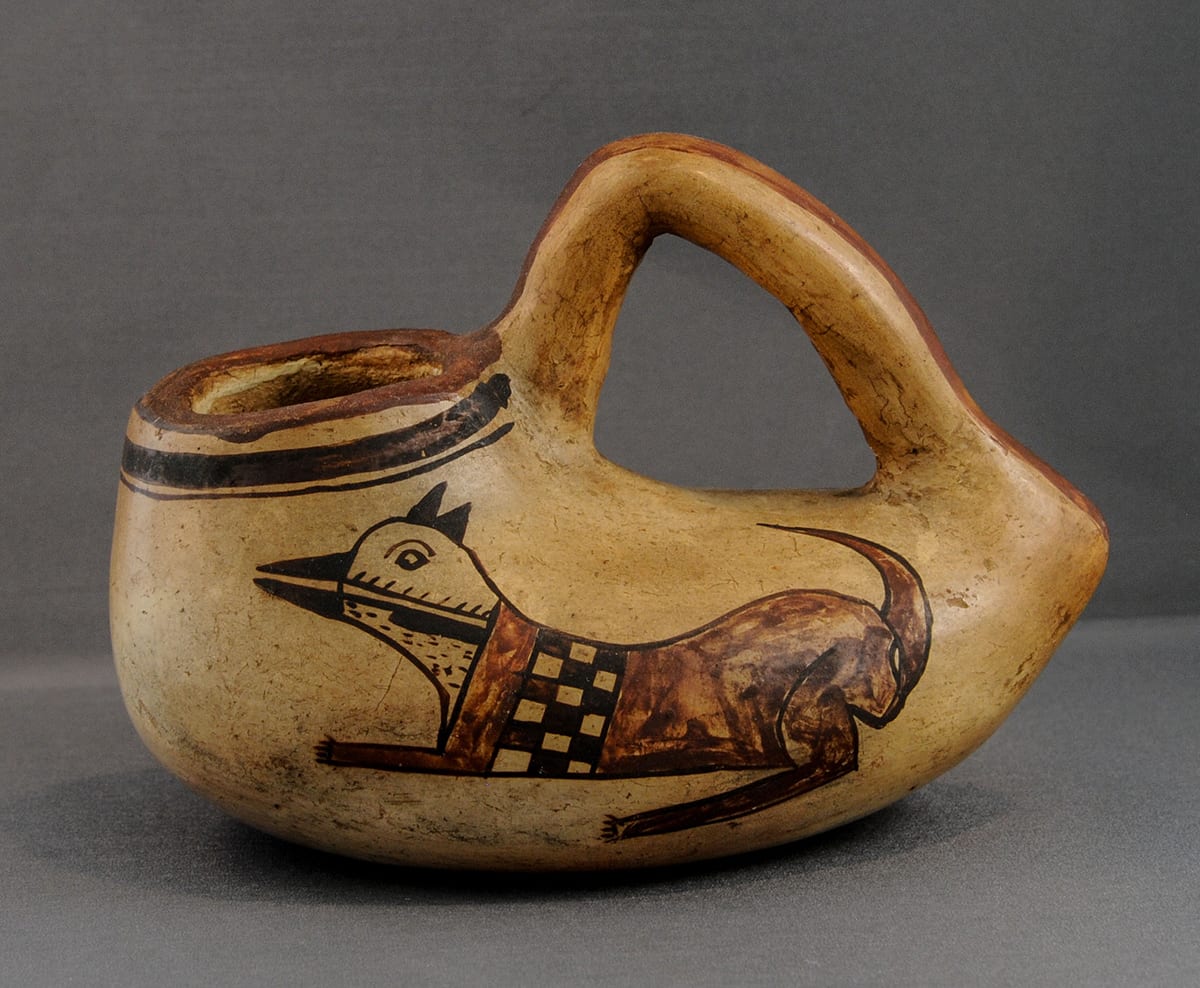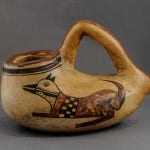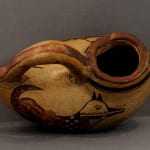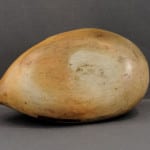This exocentric little pot is thick-walled and crudely formed. Viewed with the wide end closest to the viewer, the opening is faced slightly to the right and has an uneven lip. From this same perspective, the left side of the vessel has a broader hip and extends further from the median axis of the pot than does the right side, though this irregularity seems to reverse as one approaches the pointed tail. The handle is particularly crude. It is apparently formed of one coil of clay sharply bent. The handle bridges from the pointed tail to the pot opening, but given that the opening is off center, the handle diverges sharply from the median axis of the pot. Moreover, viewed from the pointed end, the handle slumps to the left. It’s all a bit catawampus—interesting, but not graceful.
The lip of the opening is painted red, and this color extends as a strip along the top of the handle to the point of the tail. The red lip seems to be a carryover from Polacca ware of the 19th century. The opening is framed by thick-above-thin black lines, which is not characteristic of Polacca ware but is typical of Nampeyo’s Sikyatki Revival pots. This dual treatment of the opening suggests that jar 2012-08 was made early in the 20th century, perhaps around 1905 when Nampeyo may have been making unusual forms to sell at the newly opened Hopi House at the Grand Canyon.
The only other pot in this collection that is by Nampeyo and has a red lip is 2009-17.
It’s the figurative painting on the jar that is extraordinary, finely crafted, and indicates that the jar is by Nampeyo painting at her best. This pattern of a crude form beautifully painted caught the attention of Mary and Laurence Blair:
“Several of (these) pottery pieces attributed to Nampeyo…can best be described as poorly formed and polished, but beautifully decorated…One gets the impression that these forms were hurriedly made to allow the artist to move on quickly to the more interesting and pleasant task of painting her newly inspired designs…[Fig 2.24 shows] Two crudely formed pottery pieces (that) illustrate what appears to be a period when Nampeyo emphasized painted design over pottery structure, although it is possible that they were formed by other family members…(The pots) are painted with) well-exicuted and masterful designs (1999:83).”
These words seem to perfectly apply to pot 2012-08.
Having viewed this pot online, Ed Wade wrote, “I’ve been pondering this odd little jar as to maker. It has significant similarities with the figurative painting of Nampeyo and her of animals. The checker-body mid-body is characteristic of her work as is the upturned tail and beak-like snout. I have photos of her making eclectic forms for the tourist trade.”
The Museum of Northern Arizona (catalog #7572) has a jar by Nampeyo with an animal figure that is different than that on 2012-08, but has some of the same elements and seems to have been painted by the same had as the pitcher in this collection (Allen 1984:46, 119).






